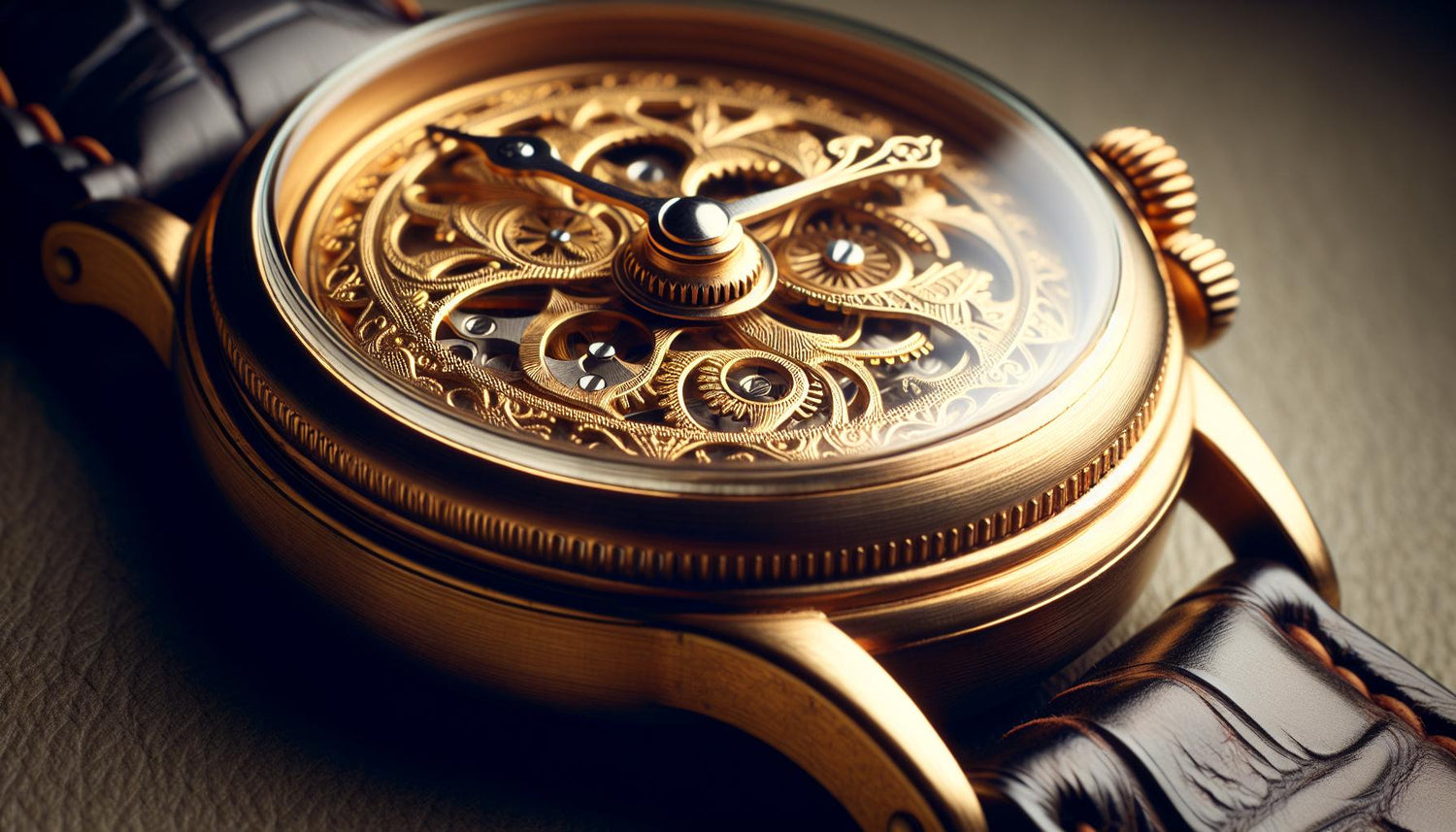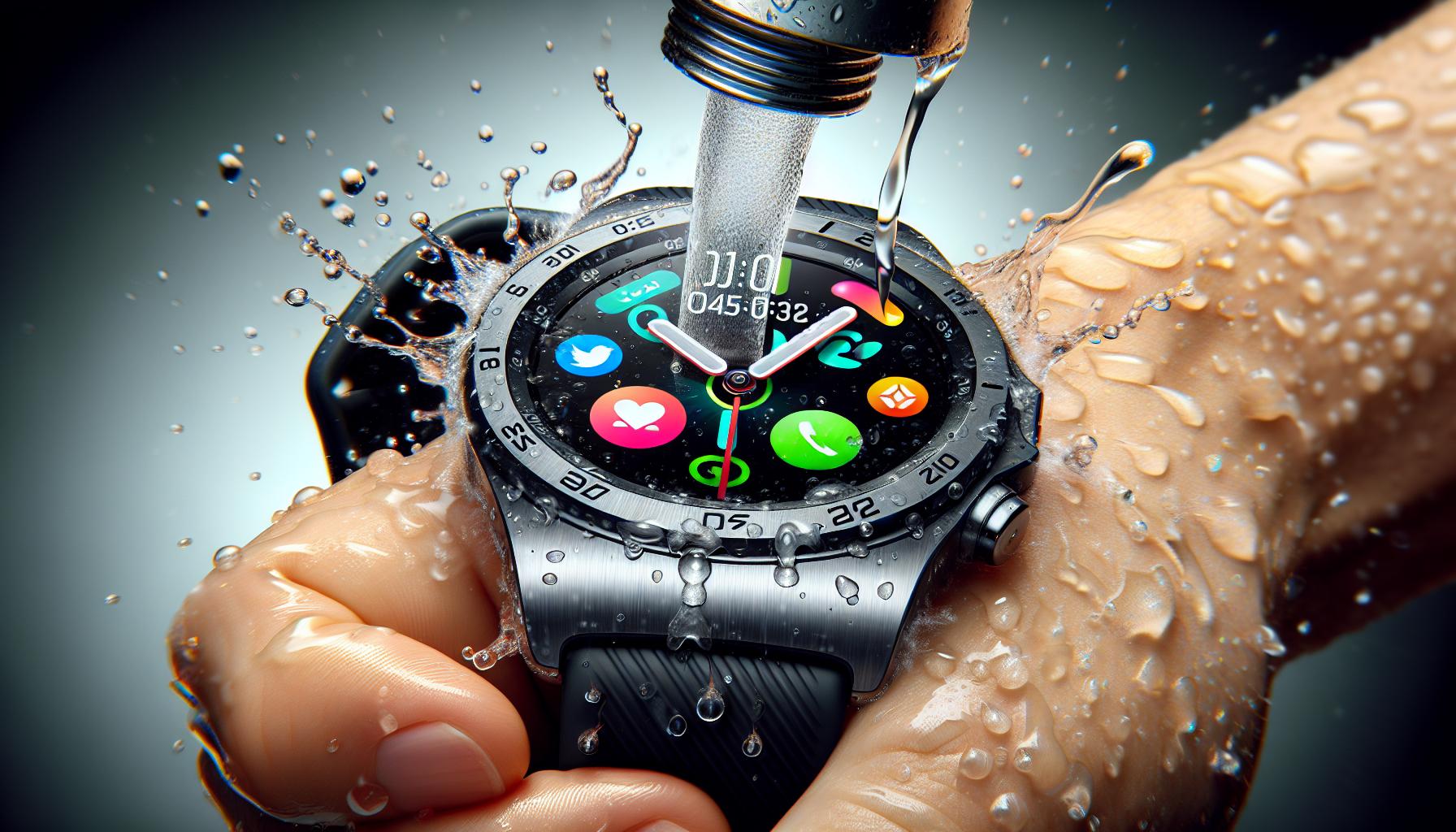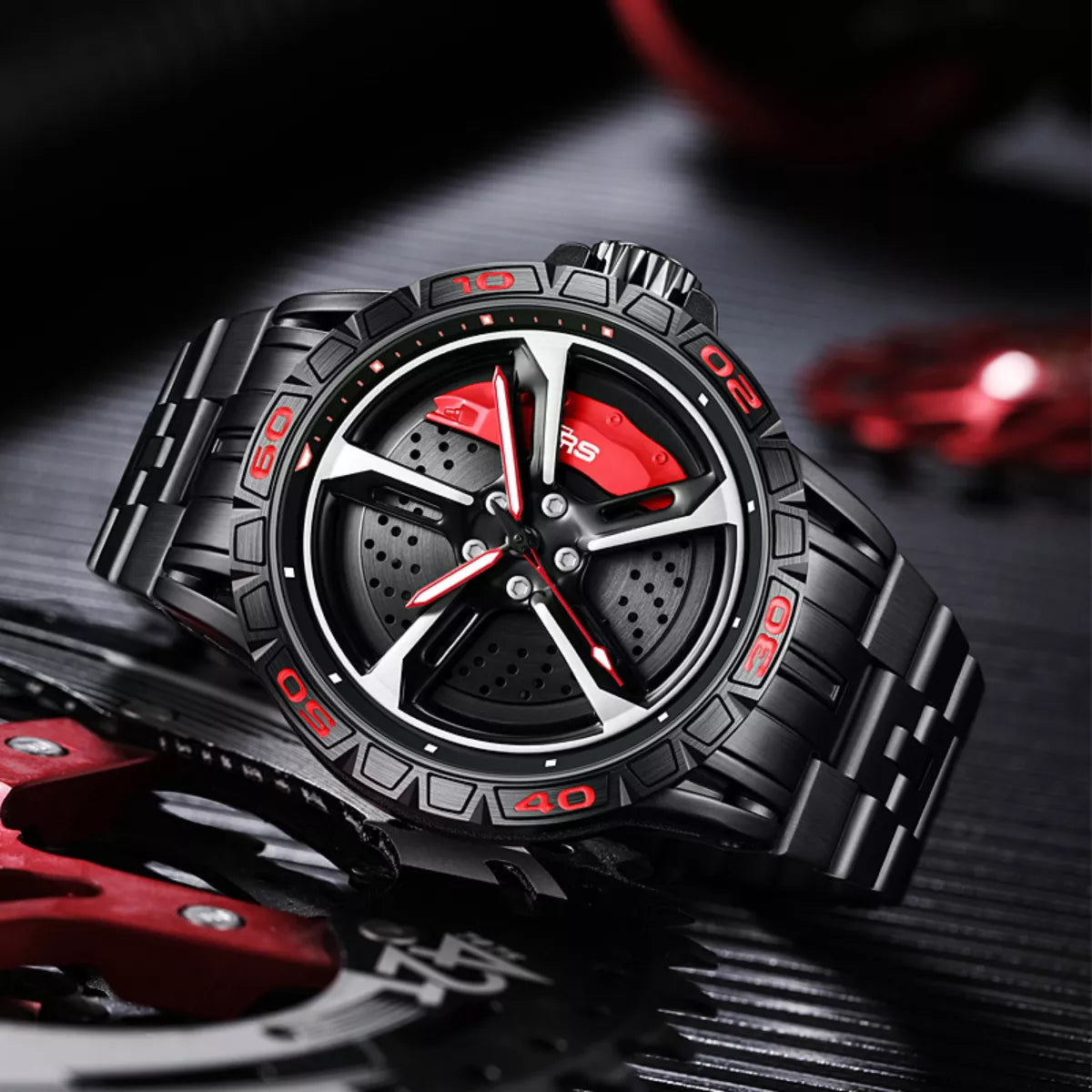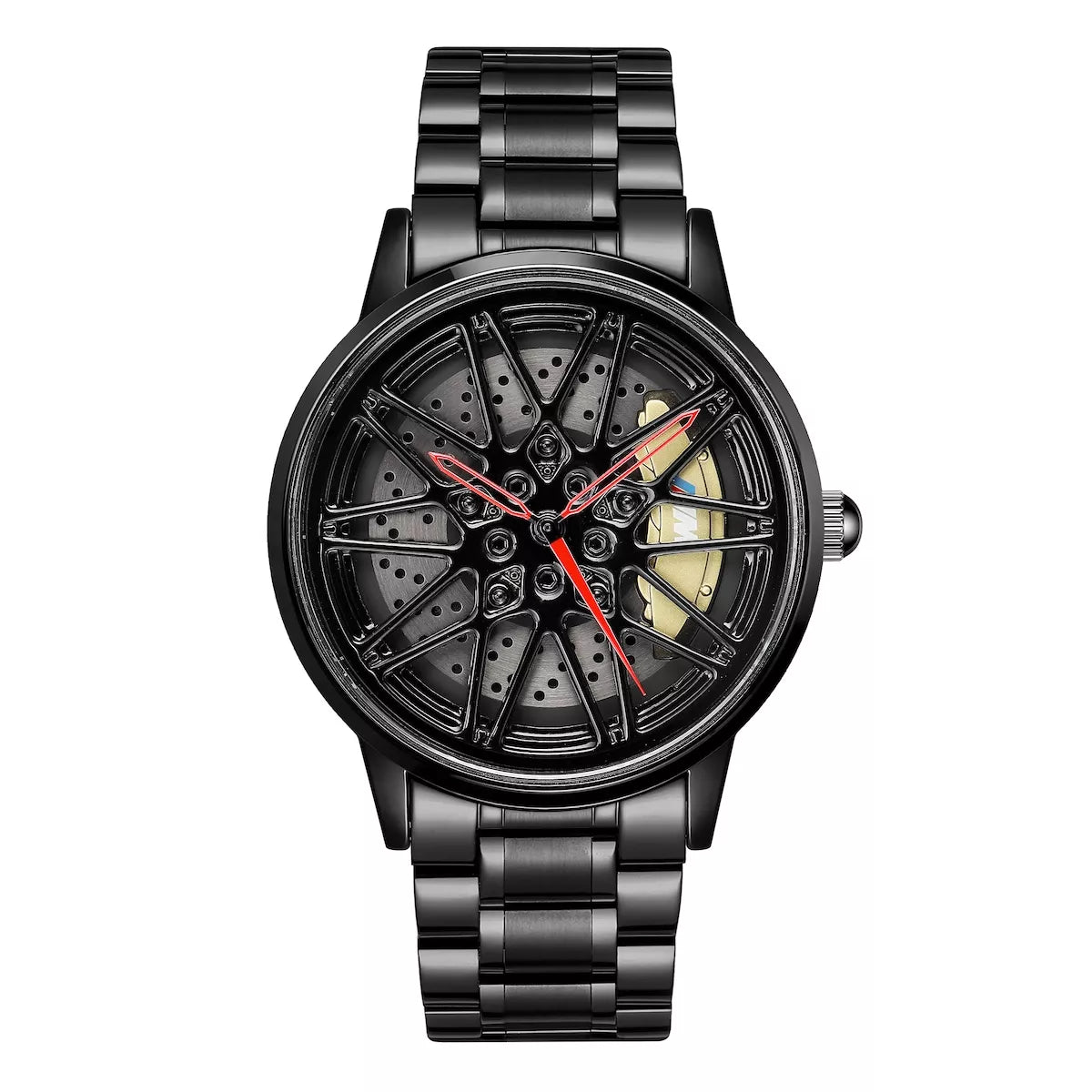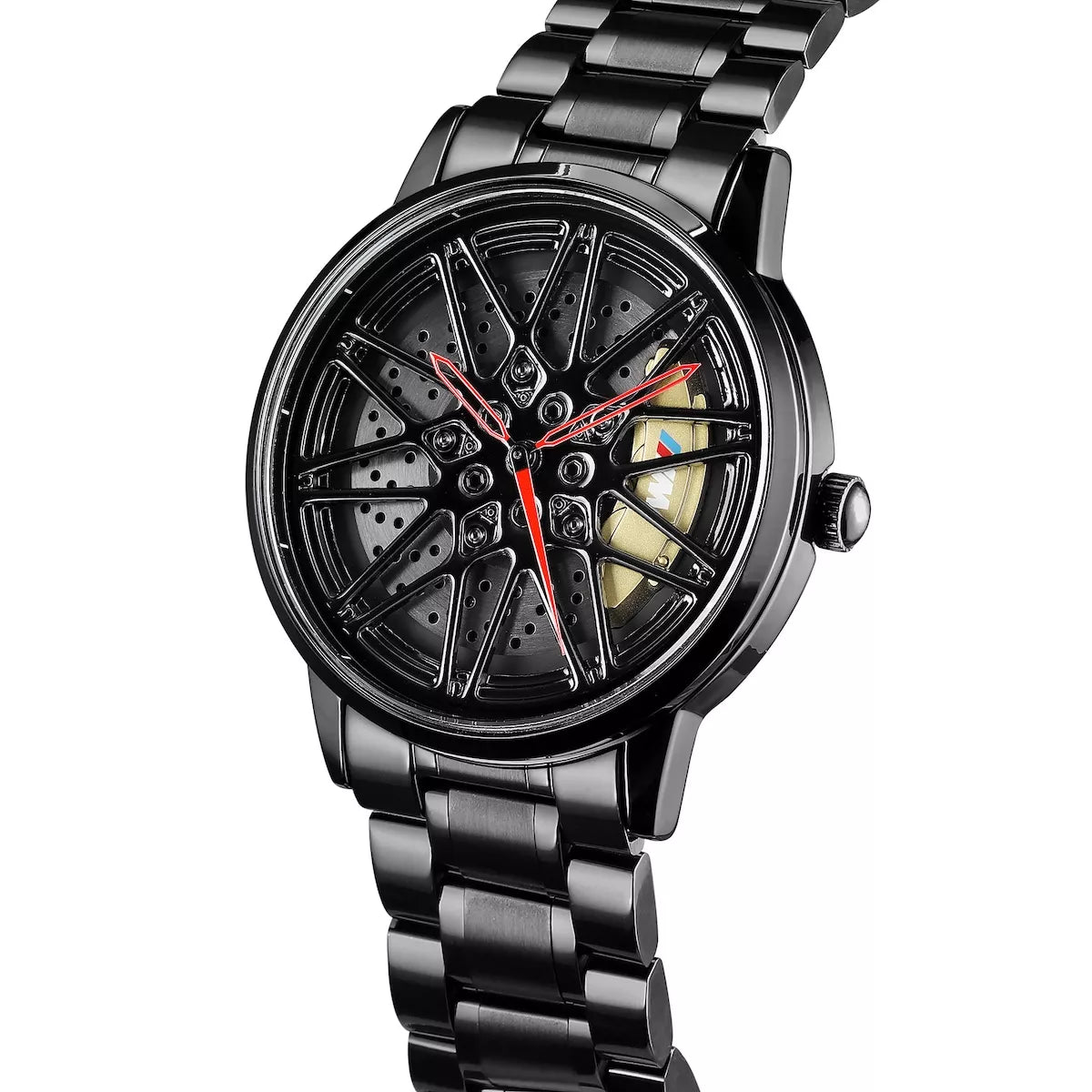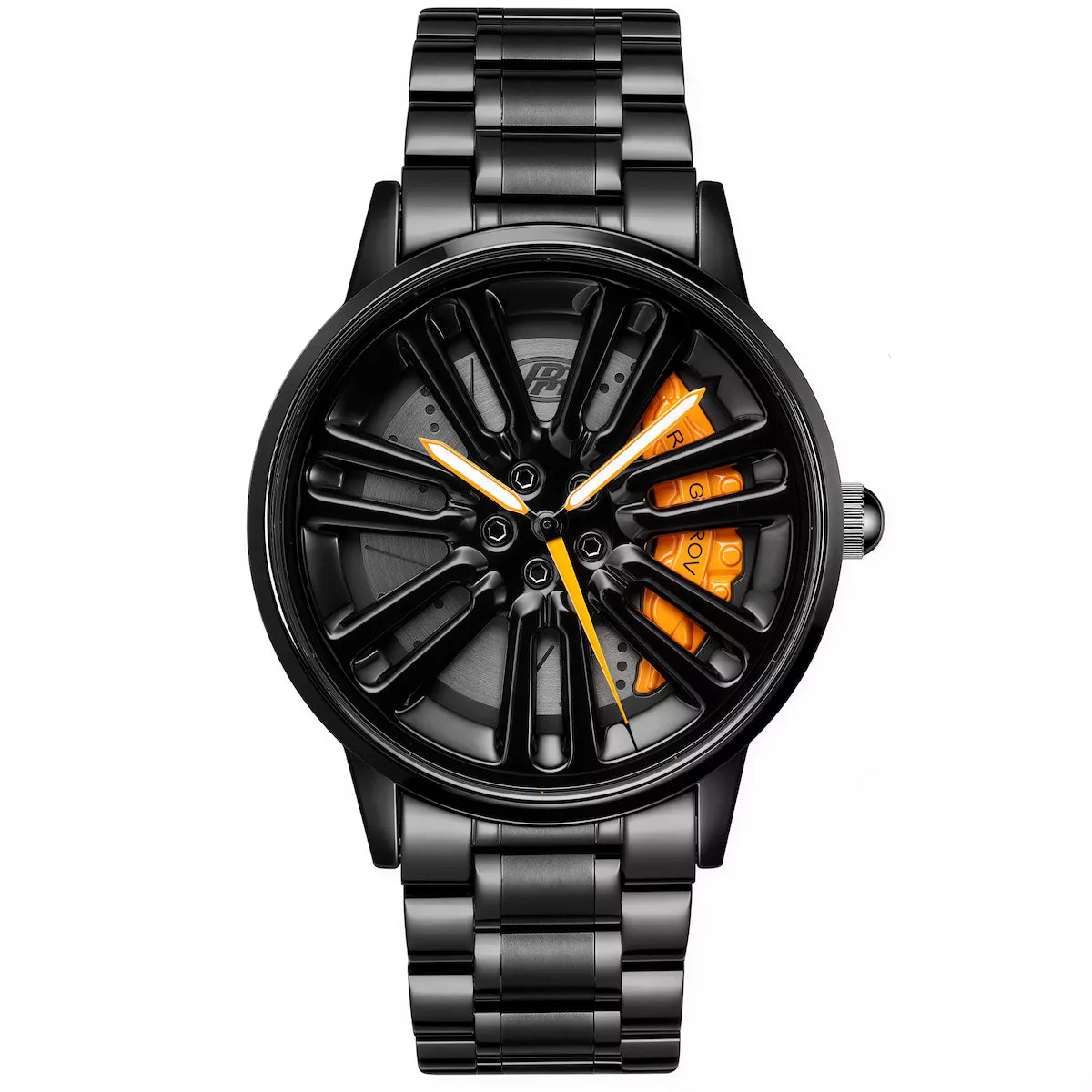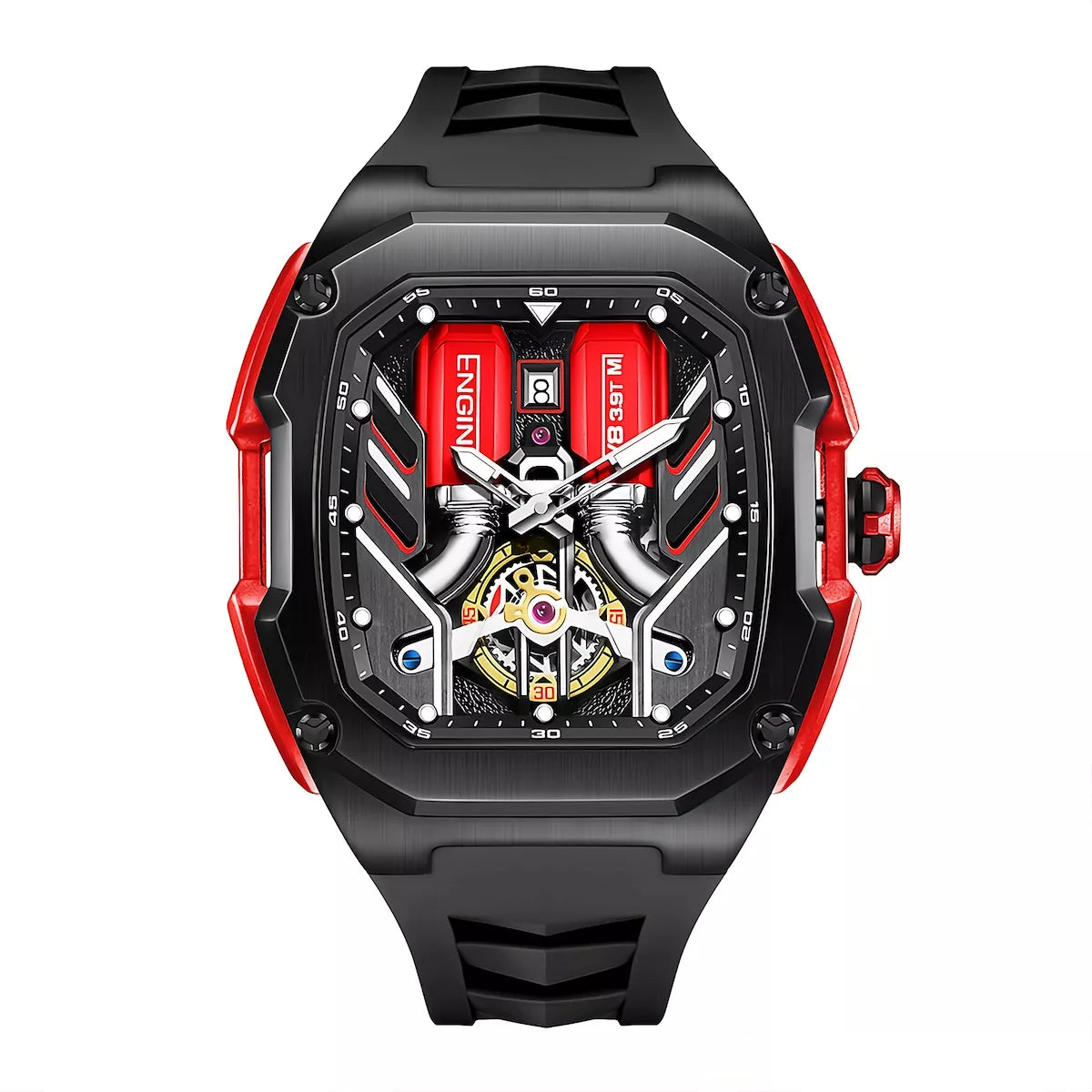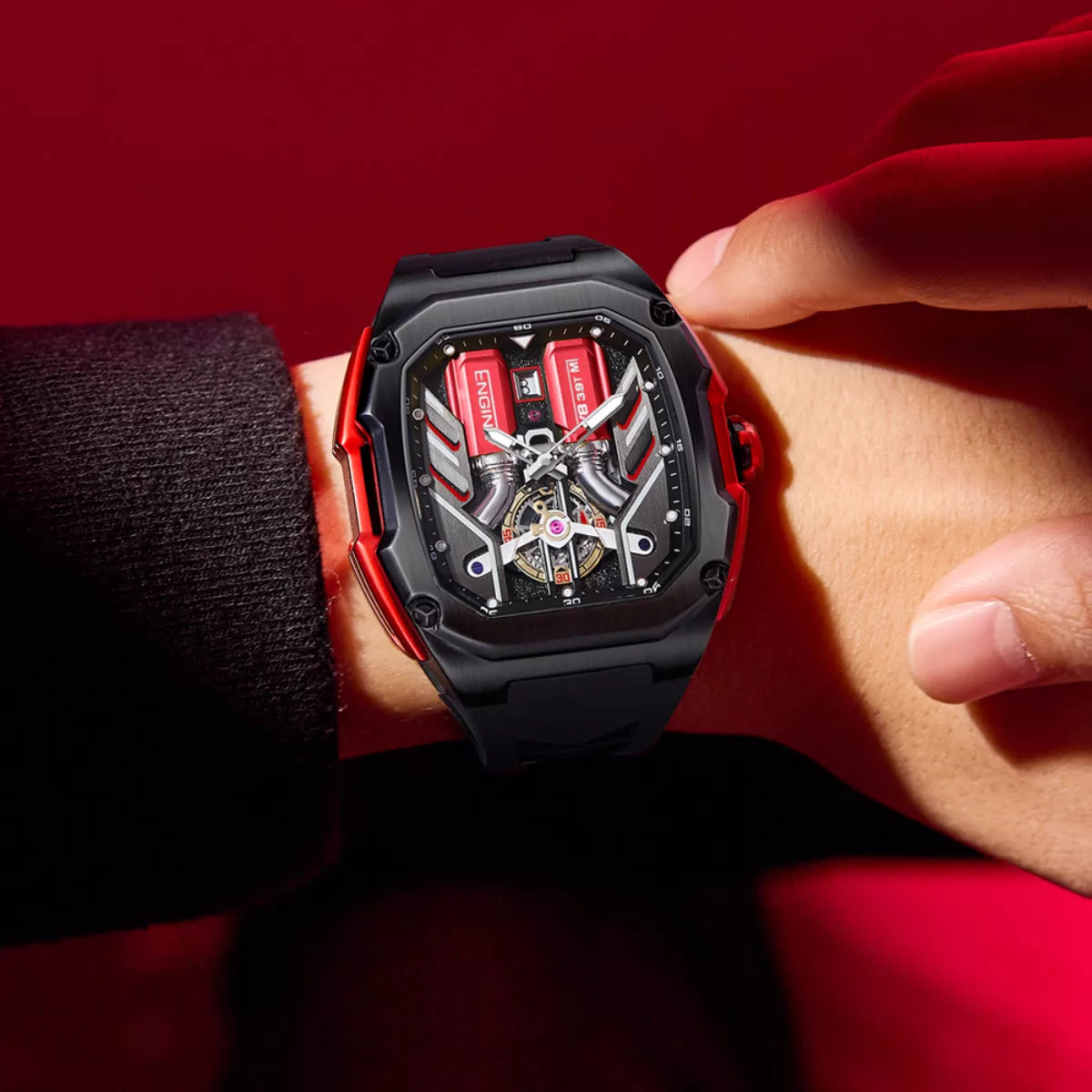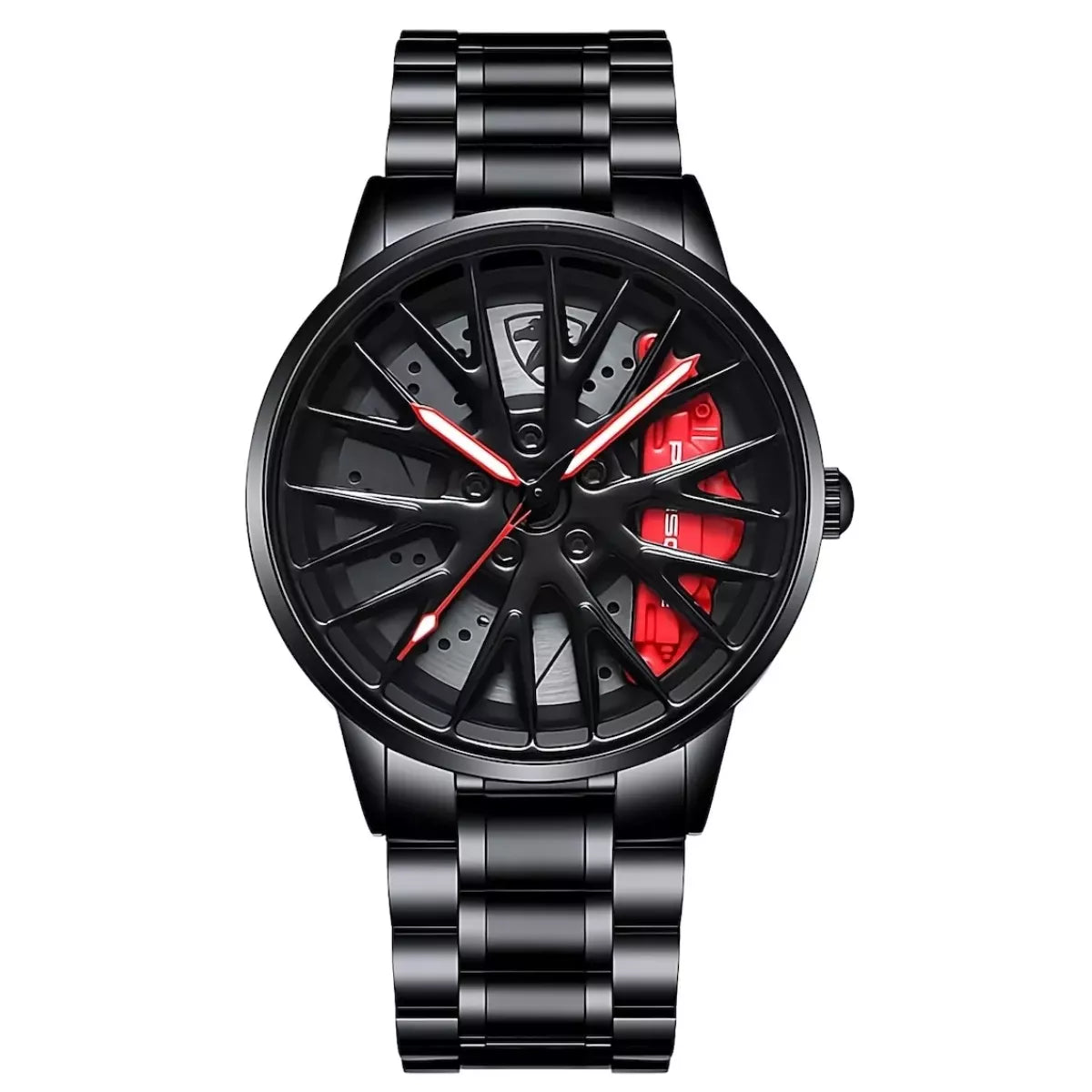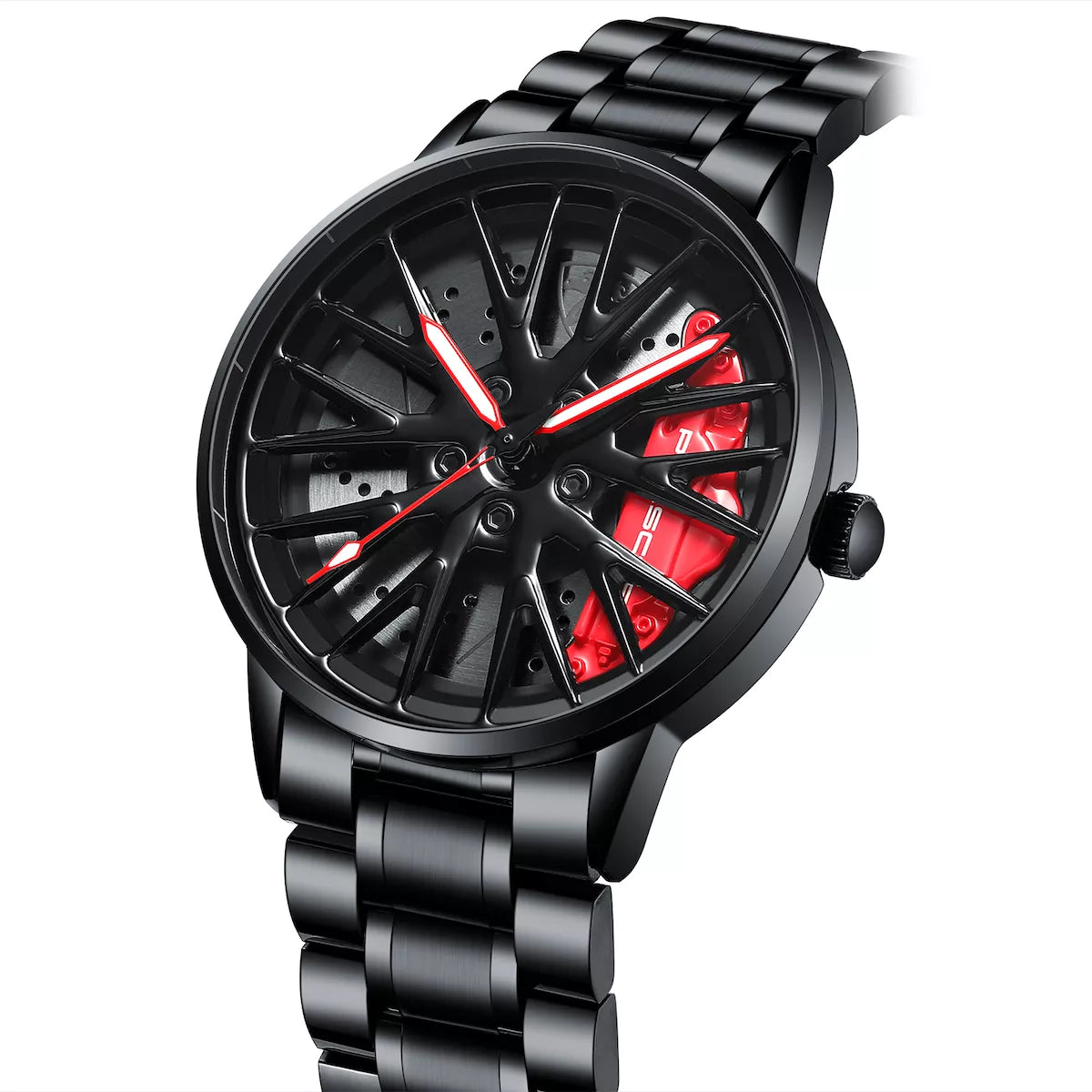When you glance at a watch, the intricate details often catch your eye, but have you ever stopped to consider the importance of the watch crown? This small yet mighty component plays a crucial role in the functionality and style of your timepiece. Whether you're winding your watch or adjusting the time, the crown is your direct link to mastering your watch's capabilities.
Understanding the watch crown not only enhances your appreciation for the craftsmanship behind your favorite timepieces but also empowers you to make informed choices when purchasing a new watch. Dive into the fascinating world of watch crowns and discover how this unassuming feature can elevate your watch-wearing experience.
What Is a Watch Crown
A watch crown serves multiple important functions in a timepiece. Primarily, it acts as the control center, allowing you to set the time and date. It also adjusts features like the chronograph or alarm on certain models.
Different types of watch crowns exist, including screw-down and push-pull crowns. A screw-down crown enhances water resistance by sealing the watch case, while a push-pull crown simplifies time adjustments with ease.
When considering watch style, the crown contributes to the overall aesthetic. Many luxury watches feature intricately designed crowns, showcasing exceptional craftsmanship and attention to detail.
Positioned on the side of the watch case, the crown typically assumes a standard size for ease of use. Some brands offer larger crowns for added functionality or playful design elements.
Understanding watch crowns enables you to appreciate the complex engineering behind your timepiece. Familiarity with this feature empowers you to make informed choices when selecting or maintaining a watch.
Anatomy of a Watch Crown
A watch crown consists of several key components that enhance both functionality and design. Understanding these parts allows for better appreciation of how they contribute to a watch's overall performance.
Parts of a Watch Crown
-
Crown Head: The visible part that you grasp to adjust settings. It varies in size and shape among different watch models.
-
Crown Stem: This connects the crown head to the internal mechanisms. A robust stem ensures reliable functionality.
-
Gasket: A rubber or plastic ring that provides water resistance. High-quality gaskets protect against moisture infiltrating the watch.
-
Threading: Found in screw-down crowns, this feature allows you to secure the crown tightly for added protection. Proper threading contributes to the watch’s durability.
-
Cap: Some crowns have a decorative cap that enhances aesthetic appeal. Luxurious designs often feature intricate caps.
-
Screw-Down Crown: This type securely fastens to the case, significantly improving water resistance. Commonly used in diving watches, it prevents leaks during underwater activities.
-
Push-Pull Crown: Designed for ease of use, you can simply pull or push the crown to adjust settings. This crown type is often found in simpler, everyday watches.
-
Integrated Crown: These crowns are built into the case, creating a sleek appearance. They provide a seamless integration of design and function.
-
Decorative Crown: Luxury timepieces often feature ornamentally designed crowns. These crowns showcase exceptional craftsmanship and enhance the watch's overall aesthetic.
Functions of a Watch Crown
Understanding the functions of a watch crown enhances usability and appreciation for your timepiece. The crown plays a vital role in several key operations.
Setting the Time
You can set the time by pulling the crown out to its second position. At this point, turning the crown clockwise or counterclockwise adjusts the hour and minute hands. Ensure alignment with the correct time zone for accuracy. Many watches incorporate a standard 12-hour format for ease of use. You can easily make fine adjustments by rotating gently.
Winding the Watch
Winding the watch occurs through the crown as well. When not powered by a battery, many automatic and manual mechanical watches rely on this function. Rotating the crown in its normal position winds the mainspring, storing energy for the watch's operation. It is common to wind a watch daily to maintain optimal performance. Typically, about 20 to 30 turns can fully energize the spring, ensuring accurate timekeeping.
Date Adjustment
Adjusting the date is also simple with the crown. By pulling the crown to its first position, you can set the date by rotating it in one direction. Be cautious of the date change mechanism, as manipulating it between 8 PM and 4 AM may damage the movement. Most watches feature a quick-set complication, allowing the date to change without altering the time. Familiarize yourself with your specific model to ensure proper handling.
How to Use a Watch Crown
Understanding the watch crown's functions enhances your experience with timepieces. Familiarity with the crown aids you in setting the time and date effectively.
Pulling the Crown
Pull the crown gently to adjust the time or date. Doing this typically allows you to engage different positions. Use the first position for winding the watch. In this setting, you rotate the crown clockwise to store energy in the mainspring, ensuring proper timekeeping. Pulling the crown to the second position offers access to time-setting features. When this occurs, turning the crown helps you set the hours and minutes accurately. If your watch includes a date function, pulling the crown to the first position allows you to adjust the date easily. Each crown's specific design may offer slight variations, so reviewing your watch's manual ensures correct operation.
Rotating the Crown
Rotate the crown to operate additional features of the watch. You engage this function when winding or adjusting settings. Typically rotating the crown clockwise updates the time or date. For automatic watches, an occasional clockwise rotation helps maintain power.
Ensure you apply enough pressure while rotating to activate the internal mechanisms effectively. When adjusting a chronograph function, rotation may function differently depending on the watch model. Each setting may involve unique movements, so consult your watch's manual for detailed instructions. This understanding empowers you to navigate the watch crown's functionalities confidently.
Common Issues with Watch Crowns
Watch crowns can encounter various issues affecting their functionality and usability. Being aware of these common problems helps maintain your timepiece effectively.
Stuck or Jammed Crown
A stuck crown can arise from dirt or debris accumulating around the crown area. Lubrication often diminishes over time, causing the crown to become rigid. When you find the crown difficult to pull out or rotate, inspect it carefully. Regular cleaning with a soft cloth can prevent debris buildup. If simple cleaning doesn’t resolve the issue, consider seeking professional assistance to avoid further damage.
Loose or Wobbly Crown
A loose or wobbly crown may indicate a problem with the crown's attachment to the watch. Frequent use can lead to wear in the threading or the stem. You’ll notice it when the crown feels unstable during operation. Ensuring proper tightening can sometimes resolve this issue, but if it persists, an expert evaluation is crucial. Repairing or replacing the crown may be necessary to maintain the integrity of your watch.
Tips for Maintaining Your Watch Crown
Maintaining your watch crown ensures its functionality and longevity. Follow these tips to keep it in optimal condition.
Regular Cleaning
Use a soft cloth to wipe the crown regularly. Dirt and debris can accumulate over time. Clean it gently with a mixture of mild soap and water if needed. Avoid abrasive materials that can scratch the surface. Rinse the crown with fresh water afterward to prevent soap residue. Pay attention to the threading if your crown is a screw-down type, as this area can trap dirt. Dry the crown thoroughly to avoid moisture buildup, which can affect the internal mechanisms.
Professional Servicing
Consider having your watch serviced by a professional at least every three to five years. Technicians can inspect your crown for signs of wear or damage. They often provide lubrication to ensure smooth operation. During servicing, the technician can also reseal the crown to maintain water resistance. Regular professional care helps prevent issues that can arise from neglect, ensuring your watch remains reliable.
Conclusion
Understanding the role of the watch crown enhances your appreciation of timepieces. It's not just a functional component; it adds to the overall design and craftsmanship of your watch. By knowing how to properly use and maintain the crown, you can ensure your watch remains reliable and stylish for years to come. Regular care and professional servicing keep your timepiece in top shape, allowing you to enjoy its beauty and functionality without worry. Embrace the elegance and practicality of your watch crown as a vital part of your collection.

